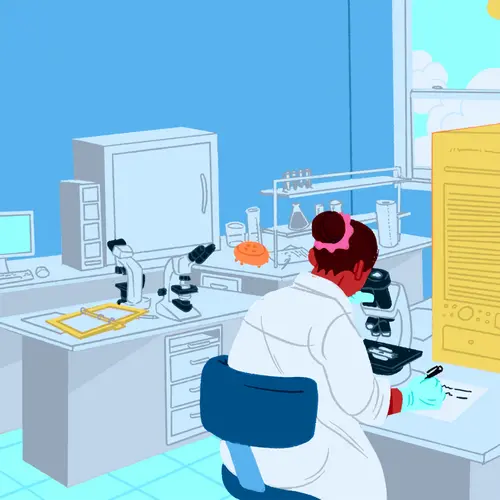Hyperthermia is the process of increasing your body temperature to a higher level than normal. Typically, a high body temperature is characterized by a fever. It can be associated with heatstroke too. However, hyperthermia is also a treatment that uses heat to kill cancer cells as well as for other medical purposes. When hyperthermia is used to treat cancer it is also called thermal therapy, thermal ablation, or thermotherapy.
How Does Hyperthermia Work?
Your doctor will use hyperthermia treatment to target certain cancers. This treatment increases the body temperature and changes your cell structures.
Hyperthermia is used to make other cancer treatments like radiation therapy or chemotherapy more effective. In some cases, the extreme heat can kill cancer cells altogether. But this also kills or harms normal cells and tissue.
Understanding Hyperthermia Treatment for Cancer
Also known as heat therapy. Hyperthermia is used as a cancer treatment because the heat is supposed to shrink tumors. The heat keeps those cells from getting what they need to live. Hyperthermia is not a regularly used cancer treatment. It’s often used as a supplement to other treatments. Most cases of this treatment are still used in research settings.
Methods of Hyperthermia Treatment
Hyperthermia has been used for over 30 years. While it’s not a standard treatment for cancer, its therapeutic and targeted properties have been used for a long time. It is a safe and effective therapy for cancer.
There are three types of hyperthermia treatment for cancer.
Local hyperthermia. This type of treatment focuses on a single tumor or other small areas. The heat is applied from the outside, aimed at the tumor. It can also be heated on the inside of your body. This is done with a thin, heated wire probe.
Different types of energy that might be used include microwave, radiofrequency, and ultrasound. How your doctor approaches local hyperthermia will depend on where your tumor is.
Regional hyperthermia. This is used when targeting an organ or limb. Your doctor will use a device that produces a lot of heat. It’s then placed over the region you’re targeting. In a process called profusion, your blood may be removed, heated, then pumped into the target region.
The profusion technique is typically reserved for cancers like melanoma or cancer in your liver or lungs. The heated blood is pumped back to your organ or limb. This treatment is usually accompanied by anticancer drugs. This is an internal targeting technique.
Whole-body hyperthermia. This treatment targets your whole body. Your doctor may use warm water blankets. You could also be placed in a thermal room or chamber. Your whole body will be heated and targeted to treat your cancer.
Your doctor may suggest hyperthermia treatment in cases where cancer has recurred. If your body won’t be able to handle a second full course of radiation therapy, you may get hyperthermia treatment. Pairing the two therapies can kill your cancer cells.
Benefits of Hyperthermia
There are many benefits to using heat therapy. Hyperthermia treatment is great for treating cancers that have already been treated with radiation.
Hyperthermia is good for small tumors that can be targeted locally. This treatment is also good if you have cervical, head, and neck cancer. It’s also good for melanoma or other locally advanced cancers.
Hyperthermia treatment’s benefit is that it can target your body with an exact temperature. It also has a very accurate target. Doctors use hyperthermia as a part of the cancer treatment strategy and not as the entire strategy.
Another benefit of hyperthermia treatment is how your body responds to the treatment. There’s an improved immune response when you undergo this treatment. Your body activates cells that boost your immunotherapy. There are still clinical trials uncovering the effects of hyperthermia and immunotherapy.
Side Effects of Hyperthermia for Cancer
Like other cancer treatments and therapies, there are side effects to hyperthermia. Side effects can differ based on the type of hyperthermia treatment you received.
Local hyperthermia side effects. Include pain at the site of therapy. You could also have:
- Infection
- Bleeding
- Blood clots
- Swelling
- Burning
- Blistering
- Damage to your skin, muscles, and nerves near the treated area
Regional and whole-body hyperthermia side effects. These side effects will depend on where and how hot your treatment was. You may experience:
- Nausea
- Vomiting
- Diarrhea
Other serious but rare side effects of regional and whole-body hyperthermia treatment include:
- Heart problems
- blood vessel issues
- Major organ problems
You can talk to your doctor about the right treatment for you. If your cancer has recurred, hyperthermia might be an option to supplement other cancer therapies you're participating in.

